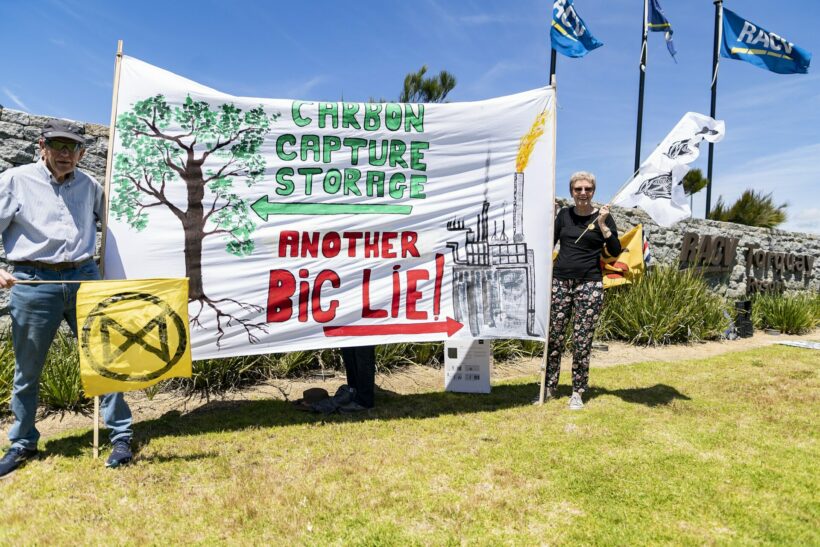Climate change has become a dollars and cents issue, especially for US homeowners.
It’s no longer easily ignored or brushed away as a ‘hoax.” Only a fool would suggest that to an American homeowner. Anybody who owns real estate knows how brutal climate change truly is. According to a report by the Federal Reserve Bank/Minneapolis: “Homeowners Insurance Costs are Growing Fast, but Coverage is Shrinking, August 28, 2024. This is every homeowner’s nightmare come true. According to the Federal Reserve Bank: “Insurers are taking a beating from extreme weather.”
Where’s the hoax when it is really needed?
Climate change has turned disruptive seemingly overnight as the temperature barrier of +1.5C pre-industrial, as defined by the Intergovernmental Panel on Climate Change (IPCC), is repeatedly violated. Carbon emissions continue to increase at the fastest rate in human history, feeding into an anamorphic global climate system that threatens homeownership. What’s to be done?
Almost everybody wants to believe that carbon capture will save the day. After all, something must be done to stave off an increasingly destructive climate system, right? Hopefully, the magic of technology will come to rescue civilization from the perils of human-caused global warming. But that’s a wishlist that doesn’t necessarily hold true.
Indeed, it would be wonderful if carbon capture could meet the scale of the problem soon enough to prevent a host of issues that are already starting to come down hard and faster than climate scientists ever thought possible, eg, meltdown of Arctic permafrost covering 15% of Northern Hemisphere landmass. It holds 1,600 billion tons of carbon equal to twice what’s currently in the atmosphere and now competing with cars, trains, planes, and industry. See: Arctic Permafrost is Now a Net Source of Major Greenhouse Gases , NewScientist, April 12, 2024.
Arctic permafrost is a humongous potential problem that’s already in motion, acting up, increasing intensity. It could whiplash global warming into a frenzy. Then, homeowner insurance costs will literally skyrocket, pricing many, maybe most, Americans out of the home ownership market. Then, congressional phone lines will turn red hot with red-faced complaints about the government not doing enough about excessive CO2 emissions emitted by oil & gas conglomerates that funneled hundreds of millions into political war chests.
Carbon Capture Capacity
“In 2023, announced capture capacity for 2030 increased by 35%, while announced storage capacity rose by 70%. This brings the total amount of CO2 that could be captured in 2030 to around 435 million tonnes (Mt) per year and announced storage capacity to around 615 Mt of CO2 per year.” (Source; Carbon Capture, Utilization and Storage, International Energy Agency, IEA)
That represents roughly 1% of 37.4 billion metric tons emitted per year. Unless, of course, the Oil & Gas industry cuts emissions. Good luck with that, they’re on a growth rampage.
Extensive research shows that carbon capture, whether Direct Air Capture (DAC) or Carbon Capture and Sequester (CCS), is not a fast enough fix it for the pace of global warming, unless massive infrastructure buildout with vastly improved technology is accomplished. More likely, as things currently stand, it’s a Trojan Horse that makes people feel warm and fuzzy that human ingenuity will conquer the biggest threat to life-supporting ecosystems. In fact, the sheer scale of the problem overwhelms the technology it’s designed to fix.
The tech crowd and Wall Streeters and oil & gas industry believe technology will come to the rescue by handling excessive CO2, removing it, controlling it, not to worry, we’ve got your back. Yet, carbon capture has a long history of failure for decades.
“Think of carbon dioxide in the atmosphere like water in a tub, and our mission is to lower the tub’s water level, but it keeps rising because the faucet is on full blast. The free-flowing tap is the global fleet of fossil fuel plants and cars pumping carbon dioxide into the atmosphere at ever greater rates. Investing in expensive, inefficient air capture rather than vastly cheaper measures like renewable energy and electric vehicles is like buying gold-plated thimbles to bail out the tub instead of turning off the faucet.” (Source: Direct Air Capture: An Expensive Distraction from Real Climate Solutions, Bulletin of the Atomic Scientists, December 15, 2023)
Moreover, global CO2 removal is an immense task, in fact, nearly beyond comprehension: According to the Global Carbon Project, humans have emitted 1500 gigatons (1,500,000,000,000 metric tons) of CO2 over time, and a lot of it still remains in the atmosphere.
Direct Air Capture and Carbon Capture & Storage – Current Status
As of 2024, global direct air carbon removal capacity of 53 operational Direct Air Capture -DAC-plants capture 59 kilotons of CO2 per year. Converting kilotons to gigatons: 59 kilotons = 0.000059 gigatons of CO2. Additionally, a new US DAC plant is scheduled to come online to capture 500 kilotons per year in 2025 or 0.000559 gigatons vs. 37.4 gigatons (37,400,000,000 metric tons) emitted per year.
Not only is DAC’s operating proficiency like a pinprick, but nearly the same proficiency greets global Carbon Capture and Storage (CCS) poised to double to 435 million metric tons per year in the face of 37.4 billion metric tons emitted per year equals approximately 1% removed per year.
“Of all the technologies proposed to combat the climate crisis, perhaps none is as intuitively appealing as direct air capture (DAC). The premise of DAC (sometimes called “open air capture”) is simple: Machinery would capture carbon dioxide (CO2) from the atmosphere, then compress, transport, and store it in underground reservoirs. But despite decades of hype, DAC still plays no role in carbon removal. The recently announced proposal to build a facility in Texas — an $811 million project that would be the largest direct air capture facility in the world — gives a sense of the scale of the problem. The plant owners promise to capture “up to” 500,000 metric tons per year, one hundredth of one percent of US CO2 emissions. Direct air capture is prohibitively expensive and energy intensive; if it were ever to be successfully deployed, it would likely create more greenhouse gas emissions than it would capture.” (Source: Direct Air Capture: The Dire Climate Consequences of Capturing Carbon From the Atmosphere, Food and Water Watch, Jan. 2023)
Return on investment on the proposed Texas facility is insanely low, or negative and embarrassingly wasting nearly one billion dollars, down the drain. How is it possible to justify spending one billion dollars to capture 0.01% of US CO2 emissions? Hello? Anyone out there?
Fossil Fuel Industry Enamored with DAC
The Texas $811M DAC facility: “We believe that our direct capture technology is going to be the technology that helps to preserve our industry over time,” Vicki Hollub, Occidental’s chief executive, told an industry conference in March. “This gives our industry a license to continue to operate for the 60, 70, 80 years that I think it’s going to be very much needed.” (Source: The World’s Biggest Carbon Capture Facility is Being Built in Texas. Will it Work? The Guardian, Sept. 23, 2023)
“While Occidental maintains that the CO2 captured in Texas will be stored underground and used as a sort of carbon credit system for other companies to purchase, the company also touts itself as an exemplar of what it calls “net zero oil”, where by removed CO 2 is injected into rock formations to dislodge gas and oil for further extraction,” Ibid. Ahem!
Enough with fantasies; there’s a real world out there: “Carbon capture has been used as a justification for new oil and gas projects. It has a history of poor performance, only captures a fraction of the total emissions from the lifecycle of oil and gas production and its long-term efficacy is questionable.” (Source: Carbon Capture has a Long History. Of Failure, Institute for Energy Economics and Financial Analysis, Sept. 2, 2022)
Moreover, “When CCS is used in fossil fuel production, it aims to capture upstream emissions—those created during the extraction and processing of the fuels—but does not reduce the bulk of emissions that are produced downstream when the fuel is burned. It also requires significant amounts of energy to operate the CCS technology itself, leading to more emissions if that energy is from fossil fuels. In fact, critical analysis of CCS technology finds that CCS can in some cases produce more emissions than it sequesters. Studies that try to show the promise of CCS technology often don’t include a full life-cycle analysis of the CCS process, thereby missing the full picture of the technology’s true inefficiency.” (Source: Unpacking Carbon Capture and Storage: The Technology Behind the Promise, International Institute for Sustainable Development, November 28, 2023)
Upon review of CAD and CCS technologies, there’s a glimmer of hope if the technology can be substantially improved enough to make a meaningful difference. Whether it can be improved soon enough remains problematic. Climate change, especially with additional installations of coal in India and China, is not waiting around for improved highly proficient technology to remove carbon.
Globally, new coal-fired power station proposals continue to outpace cancellations. According to the Global Energy Monitor, additions to the global coal-fired power plant capacity during the first half of 2024 reached 3.6 GW, with 15.6 GW of the coal-fired capacity added worldwide between January-June and 12 GW of the capacity retired. (S0urce: Global commissioning of new coal-fired power plants outpacing decommissioning of old ones, Global Energy, Sept. 8, 2024).
This guarantees more and more CO2 emissions and more planetary heat and tipsier ecosystems bringing
on extreme weather that sledgehammers home ownership insurance coverage.
Politics Has Failed Mitigation for Years
“Almost eight years after the Paris climate agreement was signed, the world isn’t on track to meet its target of limiting global warming, warned a comprehensive report issued by the UN’s climate body.” (Source: The world isn’t on track to meet Paris Agreement goals, says UN climate review, Politico, Sept. 8, 2023)
Frankly, it all boils down to politics as the guiding light for whether mitigation projects become truly effective enough to prevent global warming overshoot, which is currently on track as society’s biggest nightmare because of a failure of politics to move mitigation efforts ahead, eg, Paris ’15 targets of more than 150 nations are a crumbled disaster. Meanwhile, numerous scientific indicators point to big trouble right around the corner, tipping back and forth at the edge, teetering over the climate disaster zone. This requires an immediate halt to CO2 emissions.
Perilous Times on Planet Earth: 2024 The State of the Climate Report , 25 of 35 planetary vital signs are at record extremes. Two-thirds with record extremes is viewed by climate scientists as a clear mandate for a planet “on the edge.”
“Elections around the world could play an outsized role in future CDR investments. Former President and 2024 candidate Donald Trump has pledged to dismantle the Inflation Reduction Act, which gave an unprecedented boost to CDR investments. Similarly in Europe, the growing influence of right-wing politicians may threaten government support for CDR. Given the expense involved and the uncertainty of success, some CDR efforts, including engineered DAC solutions, could fail by the wayside without government support.” (Source: Carbon Dioxide Removal: Can it be Effective? Council on Foreign
Relations, March 29, 2024)
Climate change is forcing homeowners to take expensive inferior insurance coverage called “limited insurance options.” See: Bloomberg Green d/d Dec. 3, 2024: The Quiet Rise of Lightly Regulated Home Insurance.










